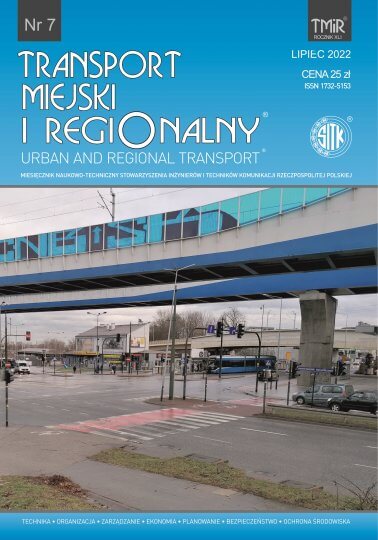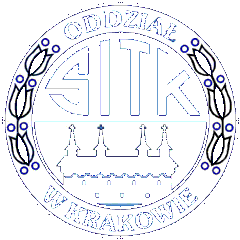
Aleksander Sobota, Mariusz Gruszka, Dorota Gawenda
The method of classifying bus lines on the example of lines organized by the Metropolitan Transport Authority in Katowice
Abstract: The issues of optimizing public collective transport (PTZ) include many dimensions related to, among others, with the transport offer, tariff or infrastructure used to serve passengers and means of transport [1, 2]. Its overall goal is to maximize efficiency while minimizing costs.
With regard to the transport offer, optimization activities may concern changes in: the number of public collective transport lines, the route of the lines, the number of journeys in a day, week and individual months, and changes in departure times from stops [3]. This process may require line classification, as optimization is not done randomly. Therefore, a bus route classification method based on multi-criteria decision support mechanisms was developed. It only takes into account the supply-side aspects of the transport system [4, 5, 6, 7], such as: the period of line operation, the number of trips, distances between stops, the spatial range of the line, operational work. Taking into account the demand dimension of the functioning of the public collective transport system will be the subject of further research. The method in question is the subject of the article. In addition, the publication presents a case study containing the use of the method for lines running in the area where public collective transport is organized by the Metropolitan Transport Authority in Katowice. The method presented in the article is one of the elements of a broader study, consisting in developing tools for designers and planners to design changes to the transport offer.
Keywords: public collective transport, metropolitan collective transport, line classification, bus lines
Sylwia Sopata, Zofia Bryniarska
Analysis of the functioning of selected transfer nodes in Nowy Sącz based on passenger ratings – part II
Abstract: The aim of the article is to analyze the functioning of two transfer nodes in the city of Nowy Sącz: Dworzec MDA S.A. and MPK station, based on passengers’ opinions. In part I of the article (TMiR No. 3/2022) the transfer node was presented in theoretical terms, focusing on defining its function and purpose of construction, and their classification was made. The principles of the construction of the transfer node were also presented and the elements of its equipment were specified. Then both nodes were characterized in terms of their location, type of public transport, infrastructural and road layout, traffic control, location of parking spaces, availability of information for the passenger and identification of existing problems. Part II presents the results of a marketing study evaluating both nodes. A survey form containing 16 questions was used to conduct the study, in which the respondents provided answers about the transfer node of their choice, which they use most often. 516 people responded by e-mail or by completing the questionnaire in person at the junction. The study showed that the layout of the node’s elements is one of the missing links in both transfer nodes, which reduces passenger satisfaction with the aspect of passenger information transfer. Analyzing the collected answers, it was also found that there was no communication between various communication lines, as well as a problem regarding the availability and adaptation of the elements of the transfer node at the MDA S.A. Railway Station. On the basis of the conclusions drawn, the possibilities of changes that could be applied in transport nodes were proposed to increase the accessibility and attractiveness of public transport as well as the interchange nodes in the city area.
Keywords: transfer nodes, means of transport, public collective transport
Adrian Baran, Zofia Bryniarska
Index assessment of transfer nodes using the AMPTI methodology on the example of the following nodes: Rondo Grunwaldzkie and Podgórze SKA in Krakow – Part II
Abstract: A transfer node is a place equipped with appropriate infrastructure that allows you to change the means of transport. In a large city, such as Kraków, it is practically impossible to travel by public transport without transfer nodes. These are very important places due to the functioning of the entire transport system. In part I (TMiR No. 3/2022) the methodology of the multi-faceted AMPTI index assessment was presented. The current version includes 10 quantitative indicators that allow for extensive node analysis. This methodology was used to assess two transfer nodes operating in Kraków, i.e. Rondo Grunwaldzkie and Podgórze SKA. The first one integrates bus and tram transport, and the second one integrates bus, tram and rail transport. Part I also presents a detailed description of both nodes. In addition to the audit of the nodes (necessary for the indicator assessment), the results of the measurement of the number of passengers embarking and disembarking at the nodes were also presented. Part II presents the results of a survey among passengers using the interchange, used to assess the convenience of transition between individual stops in the interchange and the level of available passenger information and transfers. The results of the assessment of both interchanges using the AMPTI method are also presented. The results were compiled in such a way as to check how the node equipped with bus, tram and rail communication functions in comparison with the node integrating only bus and tram communication.
Keywords: transfer nodes, AMPTI index rating, public collective transport
Rafał Woźniak
Modern information technologies – support in public transport on the example of the city of Stalowa Wola
Abstract: The article presents ITS solutions in urban public transport introduced in 2018-2019 in Stalowa Wola. The passenger information system, the electronic ticket system and the traffic supervision system were discussed. The solutions functioning before the introduction of modern IT systems, the assumed goals after the implementation of new solutions and the effects of their introduction are described. The benefits achieved after the introduction of modern technologies that affect the quality of passenger service and the management of the bus fleet were discussed. The article points to the problems that arise during the operation of information systems and devices from which the systems are built.
Keywords: public transport, ITS, information technologies
Translated by Google












